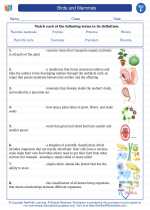Birds
Welcome to the world of birds! Birds are fascinating creatures with unique characteristics that make them stand out in the animal kingdom. Let's explore some key facts about birds.
Characteristics of Birds
Birds are vertebrate animals with feathers, a beak, and lay eggs. They have hollow bones which make them lightweight for flight. Birds have a unique respiratory system that includes air sacs, allowing for efficient oxygen intake during flight. They are also endothermic, meaning they can regulate their body temperature internally.
Types of Birds
There are several categories of birds, including waterfowl, birds of prey, songbirds, and flightless birds. Each group has its own distinct characteristics and behaviors. For example, waterfowl like ducks and geese are adapted for swimming, while birds of prey such as eagles and hawks are adept hunters with sharp beaks and talons.
Adaptations for Flight
Flight is a defining feature of birds. Their wings, feathers, and streamlined bodies are all adapted for efficient aerial locomotion. Understanding the mechanics of flight is crucial to understanding bird behavior and ecology.
Bird Migration
Many bird species migrate seasonally, traveling long distances between their breeding and wintering grounds. This behavior is driven by factors such as food availability and climate. The study of bird migration provides valuable insights into avian ecology and conservation.
Ecological Importance
Birds play a vital role in ecosystems as pollinators, seed dispersers, and predators of insects and small animals. Understanding their ecological significance is crucial for conservation efforts and maintaining healthy ecosystems.
Study Tips
- Observe birds in your local area and take note of their behaviors and characteristics.
- Read about different bird species and their unique adaptations.
- Use field guides or bird identification apps to learn to recognize birds by their appearance and calls.
- Visit bird sanctuaries or nature reserves to observe a variety of bird species in their natural habitats.
- Consider participating in citizen science projects focused on bird monitoring and conservation.
By immersing yourself in the world of birds, you'll gain a deeper appreciation for these remarkable creatures and the important roles they play in our natural world.
[Birds] Related Worksheets and Study Guides:
.◂Science Worksheets and Study Guides Sixth Grade. Birds and Mammals
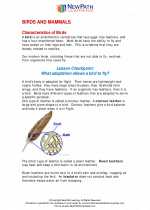
 Activity Lesson
Activity Lesson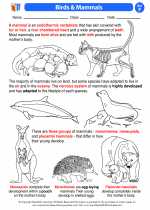
 Worksheet/Answer key
Worksheet/Answer key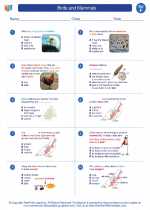
 Worksheet/Answer key
Worksheet/Answer key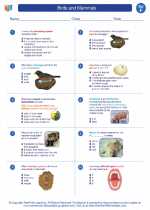
 Worksheet/Answer key
Worksheet/Answer key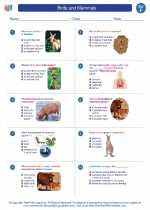
 Worksheet/Answer key
Worksheet/Answer key
 Vocabulary/Answer key
Vocabulary/Answer key
 Vocabulary/Answer key
Vocabulary/Answer key
 Vocabulary/Answer key
Vocabulary/Answer key
 Vocabulary/Answer key
Vocabulary/Answer key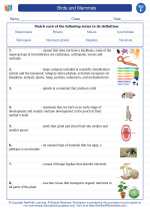
 Vocabulary/Answer key
Vocabulary/Answer key